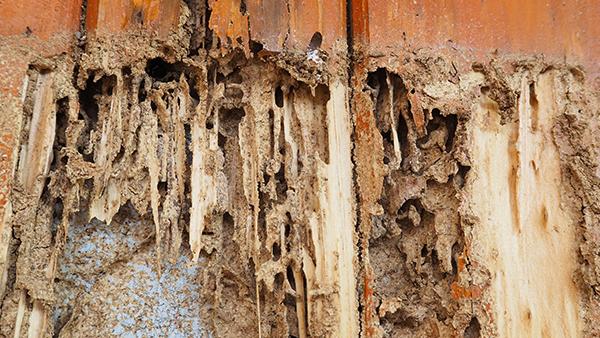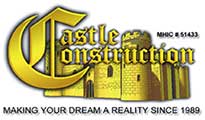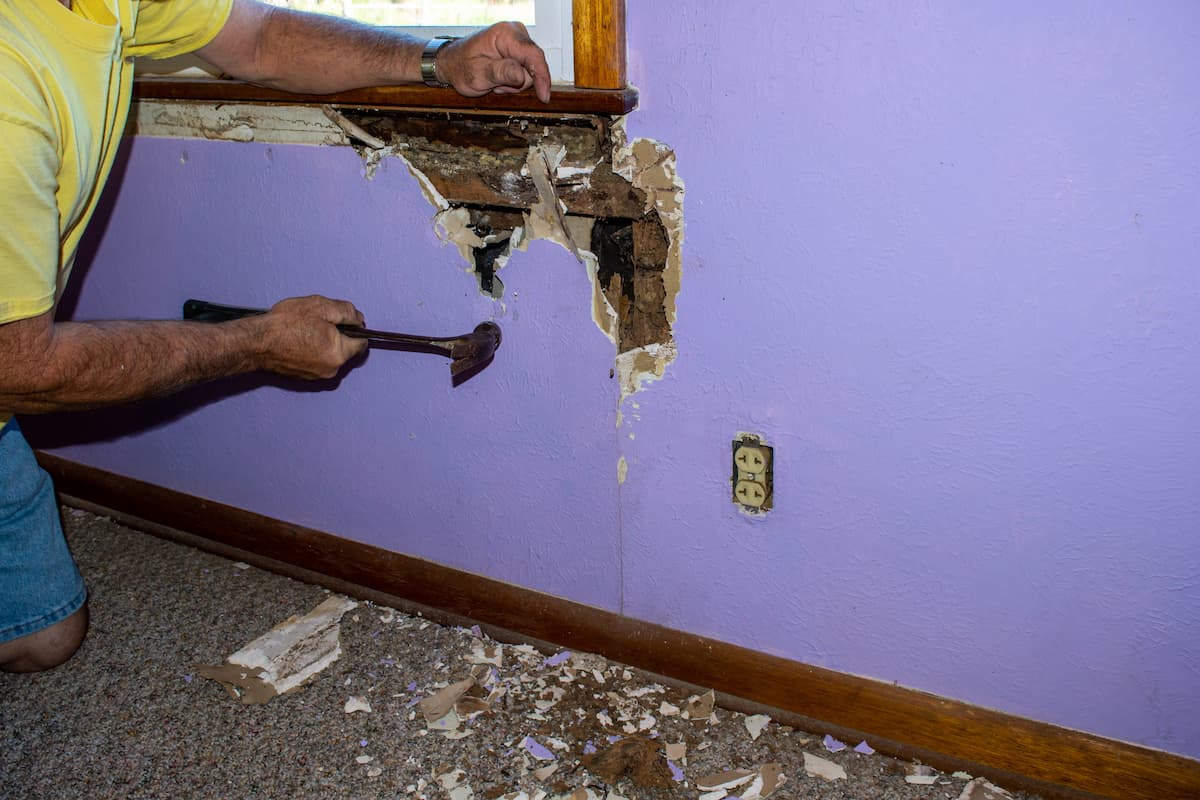Termite Damage Repair involves evaluating the damage, addressing the infestation, replacing damaged wood, and reinforcing the structure to prevent future infestations. It is vital to address termite damage promptly to minimize the impact on the property and ensure its structural integrity. Neglecting termite damage repair can lead to extensive and costly structural issues in the future. To repair termite damage, first, inspect the extent of the damage. Then, treat and repair affected areas promptly to prevent further destruction.
Identifying Termite Damage
The signs of termite infestation include visible damage, hollowed wood, and mud tubes. It is important to become aware of these signs to prevent further destruction to your property. Visible damage may manifest as sagging floors or ceilings, peeling paint that resembles water damage, or loose tiles. you might notice hollowed wood in areas where termites have been active. This can be detected by tapping the wood and listening for a hollow sound. Moreover, mud tubes on exterior walls or beams are a telltale sign of termite presence. Once you have identified these signs, it is crucial to take prompt action to repair the termite damage and eliminate the infestation.

Assessing The Extent Of Damage
The first step to repairing termite damage is to conduct a thorough structural inspection. Engage a professional for a detailed assessment of the affected areas. Use detection tools such as moisture meters and thermal imaging to identify the extent and locations of damage.
Planning The Repair Process
When repairing termite damage, selecting the right materials is crucial. Timber replacement is often necessary to address structural weaknesses caused by termites. It’s important to choose durable, rot-resistant timber to prevent future infestations. protective treatments such as borate-based solutions can be applied to prevent future termite damage. These treatments create a protective barrier and deter termites from infesting the repaired areas.
Repairing Termite Damaged Wood
Removing Infested Wood: When repairing termite damaged wood, it’s crucial to first remove the infested wood to prevent further damage. Identify the extent of the infestation and carefully cut out the damaged sections. Use a chisel or screwdriver to pry out the affected wood. Safety
Precautions: Wear protective gear such as gloves, goggles, and a mask to avoid exposure to harmful dust and debris during the removal process.
Techniques for Removal: Depending on the severity of the termite damage, various techniques such as heat treatment or freezing may be employed to eradicate any remaining termites. Ensure thorough cleaning of the area before proceeding with repairs to eliminate any lingering pests. This meticulous approach will help prevent future infestations and ensure the structural integrity of the wood.
Treating Infested Areas
Repairing termite damage is crucial to protect the structural integrity of a building. When treating infested areas, it is important to apply termite control products effectively. Chemical treatments can be used to eradicate termites, with options including liquid termiticides and termite baits. Natural remedies, such as nematodes and orange oil, can also be effective in eliminating termites. Regular inspections and prompt action are essential to prevent further damage and ensure long-term protection against termites. By taking proactive measures and utilizing suitable treatment methods, it is possible to effectively repair termite damage and safeguard the property from future infestations.
Restoring The Damaged Area
dealing with termite damage, it is crucial to properly restore the affected area to prevent further deterioration. Repairing wood structures involves carefully inspecting and replacing any damaged sections, ensuring the structural integrity of the building. By using high-quality fillers and sealants, the repaired areas can be reinforced, creating a strong barrier against future termite infestations. Surface finishing, such as painting or varnishing, not only enhances the aesthetic appeal but also adds an extra layer of protection, deterring termites from re-infesting the area.
Preventing Future Infestations
To repair termite damage, it’s essential to prevent future infestations by hiring a professional pest control service to treat the affected areas and implement preventive measures. Regular inspections and addressing moisture issues can also help mitigate the risk of termite reindentation.
Regular Inspections
Regular inspections are crucial in preventing future termite infestations. By conducting routine examinations of your property, you can identify and address any potential termite issues before they escalate. Implement a schedule for thorough inspections of both the interior and exterior of your home or building.
Maintenance Practices
Implementing proper maintenance practices can help in preventing termite damage. Ensure that any wooden structures are maintained, repaired, or replaced as needed. Address any moisture issues promptly, as damp environments can attract termites. By staying proactive with maintenance, you can reduce the risk of future infestations and preserve the integrity of your property.
Why Castle Constructions Best For Termite Damage Repair Service in Maryland
Here are some general points that a reliable termite damage repair service might offer:
Expertise and Experience: The company may have experienced professionals with expertise in termite damage repair and restoration.
Licensed and Insured: A reputable service provider should be licensed to operate in Maryland and carry insurance to protect both the company and the client.
Thorough Inspection: The company should conduct a thorough inspection of the termite damage to accurately assess the extent of the problem.
Customized Solutions: Tailored solutions based on the specific needs and extent of damage found during the inspection.
Timely Service: Prompt response and efficient service to minimize further damage and ensure a quick recovery.
Transparent Communication: Clear communication about the repair process, costs involved, and expected timelines.
Guarantees or Warranties: Some reputable companies may offer guarantees or warranties for their termite damage repair work.
Customer Reviews and Testimonials: Positive feedback from previous clients can be an indicator of the company’s reliability and quality of service.
Compliance with Regulations: Adherence to local building codes and regulations to ensure that repairs meet legal standards.
Additional Services: Comprehensive services that may include not only repairing termite damage but also preventing future infestations.
Final Inspections And Maintenance
Ensuring Proper Reconstruction: After repairing termite damage, it is essential to conduct a final inspection to ensure that the reconstruction is done properly and meets the necessary standards. This involves examining the structural integrity of the repaired areas and making sure that all work has been completed according to the appropriate specifications.
Post-repair Treatment: Once the termite damage has been repaired, it is important to consider post-repair treatments to prevent any future infestations. This may involve applying protective coatings or sealants to vulnerable areas to deter termites from re-infesting the property.
Long-Term Maintenance Tips: Implementing long-term maintenance measures such as regular termite inspections, maintaining adequate ventilation, and addressing any moisture issues can help prevent future termite damage and maintain the structural integrity of the property.
FAQs for Repair Termite Damage
How Can I Identify Termite Damage In My Home?
Termite damage can appear as hollow-sounding wood, crumbling drywall, and sagging floors. Look for small holes or tunnels as well.
What Are The Common Signs Of Termite Infestation?
Common signs of termite infestation include mud tubes, discarded termite wings, and damaged or hollow-sounding wood.
What Are The Risks Of Untreated Termite Damage?
Untreated termite damage can lead to structural instability, costly repairs, and decreased property value.
How Can I Prevent Future Termite Damage?
Prevent termite damage by reducing wood-to-soil contact, fixing moisture issues, and scheduling regular termite inspections.
Do I Need Professional Help To Repair Termite Damage?
Professional help is often necessary to assess and effectively repair extensive termite damage for long-term protection.
Conclusion
Repairing termite damage requires timely action and thorough planning. By identifying the signs of infestation, seeking professional help, and implementing preventative measures, you can effectively address the issue. Taking proactive steps to restore and protect your property will not only mitigate the impact of termites but also safeguard your investment for the long term.

